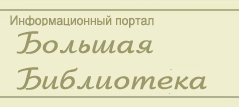Другое : Valley of the Kings
Valley of the Kings
Valley of the Kings
The
Valley of the Kings is a desert valley located on the west bank of Thebes, the
political and religious capital of the New Kingdom.
It
was first used as a royal necropolis by Thutmosis I, although it was his
predecessor, Amenhotep I, who was considered as the patron-god of the valley by
the actual builders of the tombs.
The
last known king to have built a tomb in the Valley was Ramesses XI, the last
king of the New Kingdom, although it is doubtful that he ever used that tomb.
Despite its modern name, a minority
of tombs was built for members of the royal family and their entourage.
The
valley has two main branches: the East Valley, where most of the royal tombs
are situated and the West Valley, that only contains the tombs of Amenhotep III
and Ay, and some pits. The
tombs of most of the New Kingdom kings have been discovered over the years:
some were already open to public during the Greek-Roman era, others have only
recently been unearthed.
All
of the tombs have fallen victim to one or several visits by tomb robbers, even
the famous tomb of Tutankhamun that was discovered almost intact in 1922 by
Howard Carter!
In
an effort to save the royal mummies from destruction, and to salvage the
remaining treasures of the royal tombs, the priests of the end of the 20th and
the 21st Dynasty opened the tombs, collected the mummies and buried them in two
or more "caches". The first "cache" was a rock tomb high up
in the mountains of Deir el-Bahari that was probably intended as the family
tomb of the 21st Dynasty king-priests. The second "cache" was the
tomb of 18th Dynasty king Amenhotep II. Not every royal mummy of the New
Kingdom has been found, so there is room for the hypothesis that there may have
been a third "cache" which has not yet been identified as such or
which has not yet been discovered.
The
only royal mummies to have been found in their own tombs were those of
Amenhotep II, who was re-buried in his own tomb by the 21st Dynasty priests,
and Tutankhamun, whose tomb lay undisturbed from the middle of the 20th Dynasty
on.
Список литературы
Для
подготовки данной работы были использованы материалы с сайта http://www.ancient-egypt.org
|


